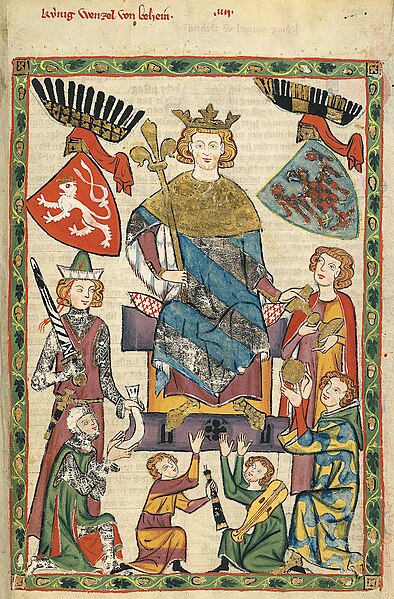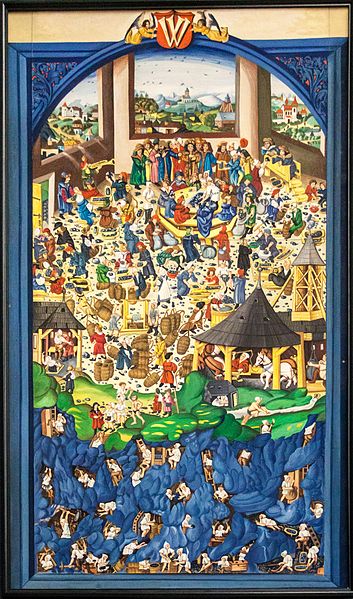The Kingdom of Bohemia, sometimes referenced in English literature as the Czech Kingdom, was a medieval and early modern monarchy in Central Europe. It was the predecessor of the modern Czech Republic.
The oldest depiction of coat of arms of Bohemia, castle Gozzoburg in Krems (13th century)
Wenceslaus II as depicted in the Codex Manesse
Prague Castle, the ancient seat of Bohemian dukes and kings, Roman kings and emperors, and after 1918 the office of the Czechoslovak and Czech presidents
Kutná Hora, a medieval silver-mining centre, was once the second most important town of the kingdom.
Czech lands in the High Middle Ages
The history of the Czech lands in the High Middle Ages encompasses the period from the rule of Vladislav II to that of Henry of Bohemia (c.1265–1335). The High Middle Ages includes the 11th, 12th, and 13th centuries. It was preceded by the Early Middle Ages and followed by the Late Middle Ages, which ended about 1500. The High Middle Ages produced a number of intellectual, spiritual and artistic works and saw the rise of ethnocentrism, which evolved into nationalism. The rediscovery of the works of Aristotle led Thomas Aquinas and other thinkers of the period to develop the instructional method of scholasticism. In architecture, many notable Gothic cathedrals were built or completed during this era.
The oldest depiction of coat of arms of Bohemia, castle Gozzoburg in Krems
Wenceslaus II as depicted in the Codex Manesse
Prague Castle, the ancient seat of Bohemian dukes and kings, Roman kings and emperors, and after 1918 the office of the Czechoslovak and Czech presidents




